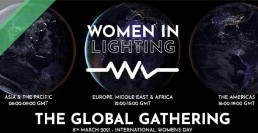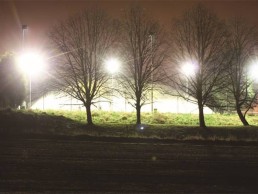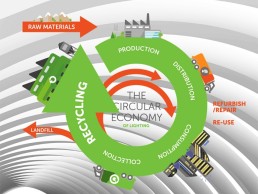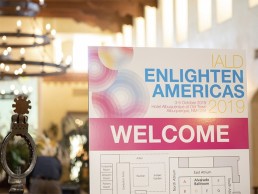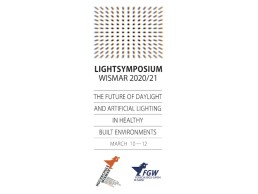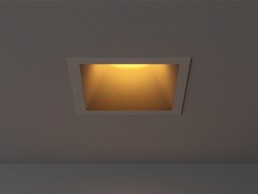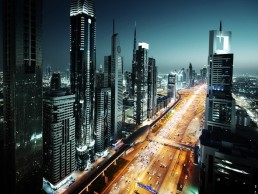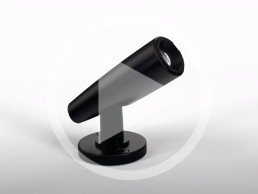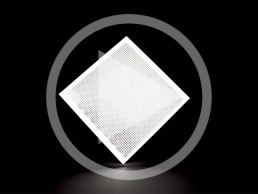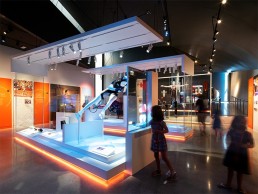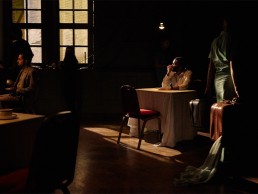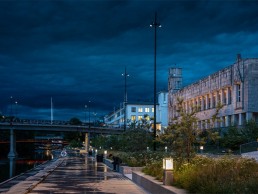Women in Lighting to hold Global Gathering on International Women’s Day
(Worldwide) – Global online event to mark WiL’s second anniversary.
Women in Lighting has announced that it will host a worldwide event on 8 March to celebrate International Women’s Day.
The WiL Global Gathering will also mark the second anniversary of the Women in Lighting project, and will be another opportunity to connect its growing network and community of international lighting professionals.
Divided into three parts to ensure that participants from different time zones around the world can participate, the day-long event will feature a selection of sessions under four themes: Inspiration, Project, Action and Social.
The Inspiration sessions will feature talks from four inspirational speakers, Dorothy Di Stefano, Jorg Seemann, Michela Bonzi and Anne Militello. These talks will be followed by live Q&A sessions moderated by WiL’s Sharon Stammers and Martin Lupton.
In the Project sessions, a range of speakers will present an overview of their project work, or spotlight a particular project.
The Action sessions will consist of a presentation about current initiatives, ranging from dark skies in New Zealand to the GreenLight Alliance in Europe, and thoughts about the lighting profession as shared from LATAM.
Finally, the Social sessions will see a return of WiL’s popular Social Roulette where, for an hour, participants can virtually meet and share their background, inspirations and daily lives with new and old friends in short, three-minute bursts. Participants will be randomly matched to a selection of other attendees, helping to naturally grow the initiative’s community.
The Global Gathering is sponsored by formalighting, alongside Casambi, Ledra, Fos and Huda Lighting.
Registration for the event is now open. More information can be found here.
ILP launches new online course
(UK) – Latest course titled Understanding Obtrusive Light: Application of Guidance Note 01 (GN01).
Artificial light provides many benefits but if not properly considered, designed and installed, it can result in a range of issues including but not limited to obtrusive light, sky glow, adverse effects on fauna and flora and potentially be a legal nuisance.
The Institution of Lighting Professionals (ILP) Guidance Note 01 (GN01) is seen as the ‘go-to’ advice for the control of unwanted, obtrusive, artificial lighting in the UK and in many other parts of the world. GN01 is based on the International Standards produced by CIE, being a practical application of these documents.
This new course is aimed at everyone who has an interest in the effects of artificial light by day and night and discusses the controls in place that can provide a successful lighting installation mitigating the concerns.
The ILP online training platform is open to everyone but ILP members can access courses at a discounted rate.
More information can be found here.
Recolight announces new Circular Economy webinar series
(UK)- Series will begin with session on luminaire design on 30 March.
Recolight has announced a new series of webinars dedicated to the Circular Economy for 2021. The series will build on previous talks held in 2020, and will highlight the progress that has been made in the lighting industry.
All webinars will be chaired by Ray Molony, who said: “It is vital that the industry continues this conversation if it is to address its responsibility to the wider world. For too long the sector has been a rule-taker. These webinars are helping us come up with a strategy that’s built from the bottom up.”
The first three webinars in the series are:
- Luminaire Design: The Circular Economy regulations you need to know – 30 March
- Return of the Lamp: How the replaceable revolution will change lighting – 29 April
- How to get Net Zero: A lighting manufacturer’s guide to becoming carbon neutral – 27 May
The Recolight webinar series in 2020 examined the Circular Economy for lighting. Discussions ranged from new regulations for lighting, through to extending the life of luminaires.
A range of lighting producers, specifiers, and designers presented positive initiatives being undertaken to reduce the impact on the environment. One of the topics still up for debate is whether the return of replaceable light sources, drivers and other components is the best route to a Circular Economy in the lighting industry.
Recolight CEO Nigel Harvey added: “I’m encouraged to see the lighting industry taking steps to become more sustainable. It is a given that we produce light sources that are very energy efficient. Moving beyond that and adopting circular economy principles in how we manufacture those products will soon be a must do, and not just an ought to do.”
All sessions are free to join, with more events to be announced for later in the year.
IALD reschedules Enlighten Americas 2021 to 2023
(Canada) – Event will now be held in Banff, Canada on 2-4 November 2023.
The IALD has announced that this year’s Enlighten Americas conference, scheduled to take place on 21-23 October in Banff, Canada, has been rescheduled to 2023.
The decision comes as a result of the continued uncertainty in Canada around the pandemic, including Canadian travel restrictions and the country’s rules about in-person events.
“The Enlighten conferences have always focused on bringing our lighting communities together in one place. Although we’re disappointed not to be able to bring everyone together as soon as we hoped, rescheduling our conference in Canada is the best action to take as responsible leaders,” said IALD President Douglas Leonard. “IALD will continue to host Enlighten conferences in 2022 and 2023, and use this opportunity to explore a reimagined Enlighten moving forward.”
Marsha Turner, IALD CEO, added: “Rescheduling Enlighten Americas was a clear decision because of the uncertainty around travel and in-person events in Canada due to the pandemic. As a global organisation that is built around community and connection – both locally and globally – we will continue to connect, learn and celebrate through our online activities and events.”
The IALD Enlighten conferences are a series of boutique education and networking events for lighting designers and the lighting community, taking place in the Americas, Asia and Europe. This year, IALD Japan will host Enlighten Asia 2021 in Tokyo, Japan, from 10-11 November, both online and in-person. Enlighten Americas 2022 will be held in Palm Springs, California, from 29 September – 1 October, while the rescheduled Enlighten Americas 2023 will remain in Banff, taking place from 2-4 November. The IALD is currently exploring options for future Enlighten Europe events, and will share more information as it becomes available.
Light Symposium Wismar 2020/21 online registration opens

(Germany) – The online event, held 10-12 March to focus on daylight and artificial lighting in built environment.
Light Symposium Wismar 2020/21 (LSW), held online from 10-12 March, will focus on the ways in which daylight and artificial lighting coalesce in the built environment.
The three-day international online forum will look to bring together the latest insights with respect to research, theory, technologies, design and applications under the title The Future of Daylight and Artificial Lighting in Healthy Built Environments.
“The title of this year’s LSW event acknowledges a world that is changing dramatically, with human health and wellbeing at the forefront of global interest and concern,” explained the event organisers. “The impact of illumination and the opportunities this presents are hard to define right now, which is why they are the subject of our debate.
“Also, today and in the future, daylight and architectural lighting design need to better acknowledge the need for interdisciplinary collaboration between scientists, medical researchers, the lighting industry and lighting designers. Therefore, education and continuing education in the form of such an event is, and will remain, the basis for all development in the field of lighting design as a discipline and profession.”
Originally scheduled to be held as a face-to-face event at Wismar University in October 2020, the event was first postponed to March 2021, but has since been moved to an online format, in line with current Covid-19 framework conditions.
The event will feature a host of lighting and health experts from Germany and abroad, with 15 renowned speakers lined up from countries including Italy, France, Austria, Poland, Sweden, the UK and the USA. Each speaker will deliver insights about their field of expertise (architecture, daylight, lighting design, environmental science, biology, astronomy and medical science) through talks related to research and practice.
Four keynote speakers will deliver presentations across the event, including Assoc. Prof. Marie-Claude Dubois, from the Department of Architectural and Built Environment at Lund University, Sweden; Prof. Dr. George C. Brainard from Philadelphia University and Thomas Jefferson University; Mark Major, Senior Partner at Speirs Major; and Prof. Dr. Eva Schernhammer, from the Medical University of Vienna, Centre for Public Health in Austria.
Aalborg University Copenhagen (AAU) has also been announced as a new partner for the event, and will host the next Light Symposium, planned to take place annually in the Baltic Region, from 2022. AAU will host the event in alternation with KTH Royal Institute of Technology in Sweden, and Hochschule Wismar University of Applied Sciences, Technology, Business and Design in Germany.
Alongside the range of presentations, international research project Light4Health (L4H), implemented since 2018 within the framework of the EU’s Erasmus + Strategic Partnership funding programme, will host a public workshop during the Symposium. This workshop will include presentations and panel discussion from leading international universities in the field of lighting design, including Hochschule Wismar, KTH, AAU, Thomas Jefferson University, the University of Wolverhampton, and the Creative Lighting Department of Russia’s ITMO University. At the end of this session, a 30-minute film, Daylight Trilogy Part 1: Humans, produced by the Swedish Lund University, will be streamed.
The L4H project develops a novel education course to teach health research methods and findings to lighting designers at a graduate level. These educational resources will be accessible soon, as open access to all parties interested in the project. Further information can be found on the L4H website at www.light4health.net.
Although moved to a new format online, organisers are still hopeful that a large network of support will make LSW 2020/21 a success. Organisers have received broad support from 11 sponsors across diamond, gold and silver categories, as well as five event partners, eight international media partners whose focus is on light and/or architecture, six well-known associations and institutions in the specialist sector, and 12 international universities. The full list of supporters can be found on the conference website.

Lucifer Lighting LED Optics and Sources
Lucifer Lighting has responded to the changes in the way we work and live with the release of three new LED platforms.
"With more people spending more time at home, there's increased attention to details that improve our work and living environment. Higher quality and warmer toned interior lighting helps improve productivity and maintain natural, circadian rhythms," said Alexandra Mathews, Executive Vice President of Lucifer Lighting.
To meet this demand, Lucifer Lighting has released two new sources: a fixed 2200K LED, as well as a new warm dim LED specifically calibrated to the incandescent dimming range from 2700K to 1800K. These 90+ CRI sources are available for all Lucifer Lighting downlights, trackheads, and surface mount fixtures such as the Squilinder and Cylinder, with numerous driver options.
In addition, Lucifer Lighting has introduced a punchy narrow beam optic, with beam angles as tight as 10-degrees, with centre beam candle power as high as 12,500. This new, high density LED source has been optimised for narrow beam optics, and notably, is flexible enough to transition to standard optics and wider beams. Compatible with all Lucifer Lighting drivers, the narrow beam optic is available in 80+, 90+ and 97+ CRI, with 2 SDCM for 2700K, 3000L, 3500K and 4000K.
The Hotel Show Dubai launches Illuminate Dubai challenge
(Dubai) – Lighting design studios challenged to illuminate high-profile Sheikh Zayed Road properties as part of Hotel Show Dubai on 18-27 February 2021.
The Hotel Show Dubai has launched an eye-catching initiative designed to showcase the resilience of the region’s hospitality sector with the Illuminate Dubai festival of light set to spotlight the industry from 18-27 February.
The 10-day event will see a select group of popular hotels along Sheikh Zayed Road transformed by night into illuminated beacons of hospitality. Each hotel has been partnered with an international lighting design studio, with full creative license to construct a custom exterior façade installation under the theme Celebration of Lighting and Hospitality.
“Following an extremely challenging trading year for the hospitality industry in 2020, and the knock-on effect that the pandemic has had on those industry sectors that support tourism GDP contribution, we wanted to shine a light on the importance of this vital economic backbone,” said Jasmeet Bakshi, Group Event Director at dmg events – the organiser of The Hotel Show Dubai.
“With global research firm STR reporting a preliminary figure of 71% occupancy for the city’s hotels in December 2020 – the highest since last February – Illuminate Dubai will also build on this new momentum and create excitement among the hospitality industry lighting professionals, and the general public, as we unite to work towards re-energising business in 2021,” he added.
The list of participating hotels and lighting design pairings include:
- Fairmont Dubai and Light Touch
- Millennium Palace Marina and Light Fusion
- Crowne Plaza Dubai Marina and dpa lighting consultants
- Mercure Hotel Barsha and Neolight
- Raddisson Blu Residence Dubai Marina and Studio Lumen
- Sheraton Grand Hotel Dubai and LW Design
- Grand Plaza Mövenpcik Media City and KEO International Consultants
- Sheraton Mall of the Emirates Hotel and ATI Consultants
- Dusit Thani Dubai and Nathan Savage Lighting Design
David McNeil, Director of dpa lighting consultants, is excited to unveil his design for the Crowne Plaza Dubai Marina, which has seen the team work to create an installation that brings the twin industry celebratory theme to life. “Dubai has been a tourism pioneer for decades, from planning and delivering its architecturally iconic skyline to developing an exceptional tourism offering that attracted 16 million tourists in 2019,” he said. “Illuminate Dubai is a wonderful opportunity for us to highlight our work and the ever-evolving appeal of the Emirates’ hospitality sector. We are confident that this will add immeasurable value to the city’s tourism experience, and hopefully light the way for a positive business year.”
Illuminate Dubai is sponsored by Sylvania Lighting Middle East and Scientechnic Lighting Solutions.
Samer Moukalled, Vice President of Scientechnic Lighting Solutions, added: “The hospitality industry has long been a backbone to the thriving tourism sector of the UAE, and the idea of using light to re-establish its importance is a major boon for lighting experts.
“Lighting is often termed the unsung hero and Illuminate Dubai has created a platform to showcase its true power.”
www.thehotelshow.com/illuminate-dubai
CLS LED: Focus Micro Series – The Art Of Lighting

CLS LED has introduced its latest product, the Focus Micro series. Small in size, but huge in performance, it is the result of an intensive collaboration between leading lighting designers from the museum world, and CLS as a manufacturer.
The Focus Micro series offers unique possibilities, such as zoom from 6º to 90º, and will seamlessly meet the needs of top designers worldwide.
Applelec: LED Light Sheet
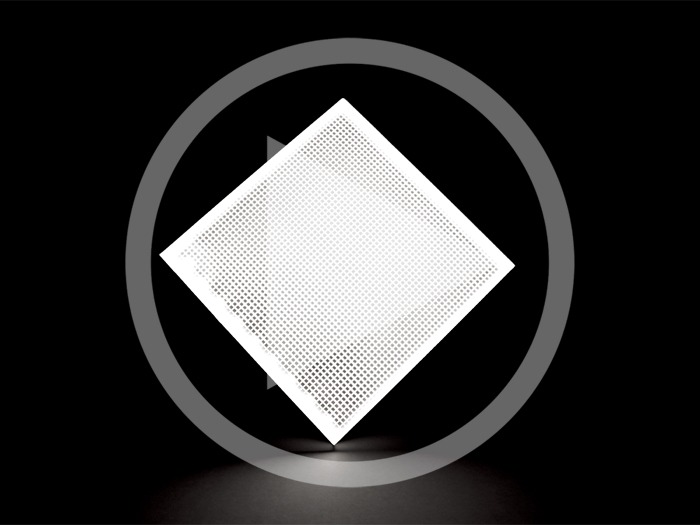
Celebrating 15 years of its UK-manufactured LED Light Sheet, Applelec's bespoke light panel has brought light to hospitality, retail and office space designs. We continually modify the engineering of our light panel, improving its capabilities and incorporating more advanced LEDs such as our new RGBW options, to consistently deliver a superior backlighting solution. Featuring a newly advanced 5-year warranty, Applelec LED Light Sheet has built a reputation as the go-to light panel for designers.
US Olympic & Paralympic Museum, USA
The recently opened US Olympic and Paralympic Museum has been expertly designed to showcase Team USA’s illustrious history in an inclusive and accessible manner. Lighting designed by Available Light and Tillotson Design Associates helps to create this inclusive atmosphere.
Situated at the base of the Rocky Mountains in Colorado, the US Olympic and Paralympic Museum is a monumental tribute to the efforts of the United States’ Olympic and Paralympic athletes.
Spanning 60,000sqft, the inclusive, accessible site designed by Diller Scofidio + Renfro Architects, with architectural lighting designed by Tillotson Design Associates, will act as an anchor for Colorado Springs’ new “City of Champions District”, forming a new axis bridging the city’s downtown district to the America the Beautiful Park.
Inspired by Team USA’s inclusive values, the museum is the first to be dedicated solely to the nation’s achievements in both Olympic and Paralympic Games, and has been designed with accessibility in mind - its dynamic, spiralling form allowing visitors to descend the galleries in one continuous path. This structure and form means that the museum ranks amongst the most accessible in the world, ensuring visitors with and without disabilities can share the same common experience.
This experience, with 20,0000sqft of museum exhibits designed by Gallagher & Associates - with lighting design by Available Light - looks to immerse visitors into the intensity of high-level competition through the lens of the athletes who have trained, competed and won. It is hoped by the exhibit design team that the experience will “forever change people’s perception and appreciation for the dedication, motivation, determination and sacrifice that all Olympians and Paralympians share”.
Externally, the museum is a glowing, angular structure comprised of more than 9,000 folded, anodised, diamond-shaped aluminium panels, each unique in shape and size. This aluminium “skin” wraps four overlapping, petal-like volumes that spiral around the internal structure. Each metallic panel is animated by the extraordinary light quality in Colorado Springs, producing gradients of colour and shade that give the building a sense of motion and dynamism.
This is complemented by an artificial lighting scheme created by Tillotson Design Associates, who were brought on board by Diller Scofidio + Renfro. Megan Trimarchi, Senior Associate at Tillotson Design Associates, explained the design concept for the building’s striking exterior further: “The brief challenged the design team to create a connection to Vermijo Ave, the bridge, and the America the Beautiful Park as extensions of the museum site.
“After seeing the selected façade material and unique form of the building, we knew we wanted the building to have an overall soft glow at night. We also knew we wanted the building to have a subtle lighting effect, resulting in an iconic and recognisable nighttime presence while also being mindful of the relatively dark context around the site.”
The continuous ramp also doubled up as the egress path through the exterior site, which resulted in very specific light level requirements, as the lighting team sought to make the path seamlessly blend with others on the site – one of the main challenges that they faced.
“The architect also had a strong desire to maintain the view from Vermijo Ave, across the site and to the mountains beyond. This meant keeping certain areas clear of light poles, so pole locations and heights were constrained in an effort to make this happen.”
Closer to the building itself, the unique façade detailing lent itself to a soft illumination, as Trimarchi explained: “We found that the aluminium panel façade material captured light beautifully when softly floodlit from a distance, so we arranged LED floodlights mounted to high mast poles on each side of the museum to achieve this effect.
“The challenge was that the site boundaries and areas within key views limited our pole locations, so we had to get creative. In some cases, we even mounted façade floodlights to street lighting poles.”
Trimarchi and the Tillotson design team worked very closely with the architect throughout the project, although they were given the freedom to come up with their own schemes that would complement such a striking piece of architecture. Trimarchi continued: “Our designs typically integrate light fixtures into architectural details whenever possible, so the emphasis is on the architecture rather than the light fixtures, so working closely together, particularly for detailing, is essential.”
Alongside the remarkable building exterior, Tillotson Design Associates worked on the lighting for the interior atrium. Trimarchi continued: “We wanted the atrium to be the heart of the project with brightly lit walls. Sculpturally this is where the spiralling architectural forms culminate to one central space, so we wanted our lighting to emphasise that.
“We also wanted to conceal fixtures so that when looking up, only the light on the wall was visible and not the fixture itself. This was particularly challenging technically, because the walls are sloping in two directions and the upper ceiling of the atrium walls are highly visible from the gallery floor viewing platforms overlooking the space.
“For this reason, we used individual wall washer track heads mounted on the clerestory windowsills so that we could aim straight down despite the sloping mounting surface. Tucking the fixtures up in this spot also helped minimise views into them while still allowing the light to spill down the walls. The effect is a truly magical space, and we are really proud of how it turned out.”
The atrium was also an area where Tillotson’s lighting design overlapped with that of Available Light, who developed the lighting for the museum’s exhibition spaces. Trimarchi explained further how the two studios worked together to create one cohesive lighting experience: “We had several discussions, mainly about the transition zones between public space and gallery space where our scopes meet. All of our lighting required a sensitivity to the adjacent exhibit spaces, which typically employ very low light levels. The architectural lighting required excellent low level dimming to achieve the required flexibility on site during programming.
“For a museum like this with such an extensive exhibit component, it is typical that there are different lighting practices working on different aspects – we always enjoy collaborating with other teams, and it was certainly a pleasure working with Available Light to bring this project to life.”
On entering the museum space, which stretches across three floors, visitors take an elevator to the atrium’s “peak”, where a spiralling sequence of galleries takes them through this history of the Olympic and Paralympic Games, while a number of interactive exhibits give visitors the chance to try their hand at the various training methods that Team USA athletes have gone through over the years.
Ted Mather, Principal of Available Light’s New York studio explained the lighting concept for the sprawling museum spaces: “Because of the very nature of the Paralympic movement, one overarching goal of the client was to create a world-class visitor experience presented with state-of-the-art inclusivity and accessibility techniques and guidelines. The US Olympic/Paralympic Committee was also interested in creating an environment that was uplifting, inspiring, and reflected the high energy and intensity common to the best athletes in the world.”
Available Light therefore hoped to design a lighting scheme that created “the appearance of clean, bright white light throughout – with its connotations of honesty, transparency, truth, height, etc, while using saturated colour in the periphery to emphasise passion, diversity, energy and excitement”.
Mather continued that this inclusive concept was brought to life, mainly through crisp and clean application of colour and angle. He explained: “Because many artefacts were light sensitive, we used a limited number of fixtures, at sharp angles and tight beam spreads; by creating contrast with the background, the impression of intense light, reflective of the power of sport, was made possible without causing undue damage to the artefacts.”
Accessibility was also a key parameter for the project as a whole, and as such extra measures were taken by the lighting designers to ensure that the lighting was tailored to a more inclusive, accessible environment. This was done, Mather said, by firstly being “aware of this critical point of view”.
“Objects and graphics always reflect light and cause glare when viewed from certain incident angles, consequently we are sensitive about where a fixture is located, so the resultant glare is directed away from where visitors’ eyes are likely to be. In this case, the point of view of someone at a lower level – in a wheelchair, for example – had to be regarded as a high priority.”
Throughout the project, Available Light worked closely with exhibit designers Gallagher & Associates, as well as Diller Scofidio + Renfro to create a scheme that was suitable for the exhibition spaces, while also remaining “highly integral” to the wider building design. “Diller Scofidio + Renfro had a strong interest in bringing daylight into the exhibit spaces and allowing for views to the outside and the extraordinary Colorado landscape,” Mather continued.
“The interiors were meant to be light, airy and uplifting. Creating an environment that gracefully transitioned from daylight to darker areas where video projection was used, or light sensitive artefacts were displayed, was complex and challenging, but was ultimately very successful.”
This challenge was complicated further by the building’s angular structure and constantly shifting angled ceiling planes. While Mather felt that such unique geometry made his job harder, he added: “But like a lot of great art, challenges demand your best effort, and force you to come up with very thoughtful solutions.
“It’s Occam’s Razor – find the simplest way to solve a complex problem, and you’ve probably done the right thing.”
Mather explained that Available Light worked with the building architects to create a lighting system that was flexible enough to accommodate the unfolding exhibit design, while they also collaborated with Gallagher & Associates on integrating lighting into exhibits where possible, particularly in instances where the geometry of the building infrastructure did not align with the exhibits.
As Mather described, the museum space comprises a range of light sensitive artefacts, as well as areas with video projection. This can complicate matters for the general exhibit lighting, however, he explained how the design team was able to overcome this. “Control is key. It is about using a large number of small paint brushes of light instead of big washes. Those smaller strokes allow us to strategically avoid video projection surfaces, control light levels on artefacts, and direct focus to what is important,” he said. “This high level of lighting control brings a sense of drama and gravity to the moment.”
As with any project from the past 12 months, the US Olympic and Paralympic Museum was completed at a very unusual time in our history, with Covid-19 impacting on the way that all of us have been able to work and interact with each other.
This was certainly no different for Available Light and Tillotson Design Associates, who each had their own struggles in working through the pandemic.
“The impact we felt was mostly on executing the final on-site design work,” Mather said. “We worked in shifts from 2pm to midnight for focus to reduce overlap with other contractors. At the end of the day, we would take photos of our progress and email them to the client for comment, since they were not yet on site. That required Photoshopping about a hundred pictures a night, since the camera sees light very differently than your eye – I would adjust them to what it looks like in person, not the way a digital sensor sees light and colour.”
Trimarchi added: “Covid certainly complicated our final punch listing and focusing, which ended up being done remotely and condensing our work into fewer trips. It also greatly delayed the site and façade lighting portion of the project, which followed months after the interior was finished due to delivery delays.”
Despite these unforeseen constraints, both Tillotson Design Associates and Available Light were able to create a combined lighting scheme that showcases both the exhibits within the museum, and the building itself.
“While the detailing and execution of the lighting effects evolved over time, our initial objective of softly lighting the striking structure from the exterior and brightly lighting the central atrium as the genesis of the spiralling form carried through to the final design,” said Trimarchi. “The lighting emphasises the architectural form, both inside and out, which was our primary goal for this project.”
Mather added: “I think we were quite successful in creating a sense of drama and energy that effectively supported the content. The spaces flow well visually, but different galleries are distinct in character. The balance between artefacts, projection surfaces, graphics, and exhibit elements is refined and graceful.
“Necessity is the mother of invention – the architectural and exhibit design teams challenged us with innovative technologies and forward-thinking designs that brought all our skills and talents to bear. The coordination and cooperation required to execute the design truly honoured the Olympic spirit!”
www.availablelight.com
www.tillotsondesign.com
The Halfway House, UK
Fusing architectural lighting with theatre and public realm lighting, Satu Streatfield and her lighting team created an immersive, all-encompassing lighting scheme for the site-specific theatre piece, The Halfway House.
Although the link between theatre lighting and architectural lighting design is a well-worn path, with many in the architectural lighting design world starting their careers in stage lighting, it is rare that the two typologies overlap in one all-encompassing project.
This was the case for Satu Streatfield and her team when it came to illuminating The Halfway House, a site-specific, immersive theatre piece that was devised and staged in the old Central Saint Martin’s campus on Southampton Row in Holborn, London.
The piece was created by Persona Collective – a group of creatives led by theatre director Rocio Ayllon – who were invited by arts charity The Koppel Project to develop and stage a theatre show at their Koppel Project Campus, which was conceived as an experimental, cross-disciplinary education and arts facility in the former Central Saint Martin’s college.
Ayllon established Persona Collective in 2017 as a not-for-profit community interest company that would serve as a vehicle for creative practitioners from design, art, photography, film-making, music and theatre to collaborate on cross-disciplinary, site-specific theatre projects. The collective seeks to involve local communities, including both amateur and professional performers, in co-creating its shows, while also using buildings and spaces that are either overlooked or at risk of slipping from living memory.
Shows and performances are developed using ‘devised theatre’ techniques, while Ayllon also runs months of dance, improvisation, role-play workshops and theatre games with performers in situ to gradually develop their characters and the narratives. Research into the history of the site, its urban context, and past uses and users, heavily influences the role-plays and the narratives. This means that the story is tailored to, and emerges from, the building and its history. In the case of The Halfway House, Covid-19 inevitably drove much of the conceptual, physical and logistical aspects of the performance too.
The narrative for The Halfway House revolved around three storylines – The Porter, The Maids and The Resident – each unfolding in the titular Halfway House, a fictional hotel. The building and its residents are stuck between two worlds, paralysed by nostalgia and slipping into real and fabricated versions of their past, but equally seduced by and drawn into the absurdly ill-fitting and new reality of a ‘luxury’ hotel, which is in the process of being constructed but already feels extremely makeshift, seedy and tired.
The three storylines run concurrently, overlapping as audience members follow each story in and around the building.
Streatfield explained further how the lighting concept for such an immersive, interactive performance was created: “The piece was site-specific, so lighting-wise the first thing we did was spend a lot of time in the building, exploring inside and out, sketching, photographing and filming it at different times of the day and night. It’s a huge, labyrinthine place and, during our first couple of months there, it was almost completely empty,” she said.
“The lighting effects – both natural and man-made – that we found in some of the rooms and corridors were already beautiful. Other spaces had no lighting at all, or glary bulk-head lights that the construction company had introduced as part of their building works. But even those spaces were really inspiring because they were so jarring – the place was a real Frankenstein’s Monster of atmospheres, details and styles. We saw the building itself as a real character and major protagonist in the show.”
From here, Streatfield started to formulate rough ideas for the lighting, before the performers had even arrived ‘on set’. One of the key elements that she sought to incorporate was the combination of both interior and exterior lighting.
“There were really striking views from the building down onto the street that we really wanted to make use of, so we decided early on that the show should involve scenes both inside and outside, with views between exterior and interior, public and private realms.
“One of the most inspiring existing effects on site was the light spilling into the historic Lethaby Building from Southampton Row. The light from streetlights pouring through windows and filtering in through trees, car headlights flashing past – these all formed really important inspirations and juxtapositions not only for the designed lighting effects but also for certain narratives that emerged through the workshops.”
In the early design process, Streatfield and the lighting team kept their ideas “pretty loose and minimal”, not getting too attached to any particular ideas in the knowledge that they could change as the stories and characters evolved. As such, Streatfield sat in on performance workshops to gauge the progression of the narrative and play around with basic effects of light and dark, colour and focus “to see if they felt right, or to see how the performers would respond”.
“It was a very fluid, iterative dialogue and really involved just playing and improvising with light as part of the workshops,” she recalled. “Rocio [Ayllon] and our photographer, Karolina Burlikowska, would feed us references from fine art, photography, music, architecture, and in particular cinema, to get us all in the same kind of mindset, atmosphere-wise, as the narratives started to take shape.”
Most of the real lighting design work, Streatfield continued, came towards the end of the workshop process, once the narratives had almost taken form. “At that stage, it was really about watching and following the performers through their scenes to develop and refine the lighting concepts, building upon those early ideas inspired by the existing architecture and context. The sound and lightscapes emerged in parallel, feeding off and supporting each other. It was a really inspiring and exciting way to work – listening to the soundtracks in situ, even without any performers, was a really powerful catalyst for envisaging the character of light that could emerge.”
Throughout the performance, the variety in scenes and storylines called for a broad range of lighting scenarios, some relatively natural, and others more abstract or ethereal.
“Some scenes involved very little or no dialogue and were conceived as more overtly dreamlike spaces, with light creating an amorphous perception of space and evoking characters’ moods or echoing the movements,” Streatfield explained. “In others, we kept the lighting very naturalistic and still, putting all the focus on the performers’ subtlest expressions, movements and dialogue.
“In other rooms, we started with unremarkable-looking light from familiar sources, which would then be oddly juxtaposed or begin to distort somehow to give that sense that everything was a bit off-kilter and unstable. A makeshift hotel room was lit with floor-standing lamps, but these were supplemented with fill-light filtered through a fan, which we slowed down at points to give the light a subtly-nauseating, shuddering quality.”
The central focal point of the performance was the Storm Room, a stand-alone light and sound installation created by fellow lighting designer and light artist Jack Wates. “On our first visit to the campus there was one room in the historic, listed Lethaby building that we found so beautiful and magical that it was almost intimidating,” Streatfield continued. “It was so spectacular that it really demanded a lot of love.”
The Storm Room was conceived as an artificial lightning storm that would occupy a central space in the building, positioning Lethaby’s iconic glass dome as a “mediator between body and storm”. “The concept was to produce a piece of magical realism as a place in which a storm was forever raging. The immaterial characteristics of the storm – rain, thunder and lightning – would become permanent features of the room,” Wates explained.
The “storm” was designed to give the sense that it was continuously moving – approaching, departing, and climaxing in moments where lightning would strike directly overhead. The lightning, and associated thunder, was programmed with a randomiser to ensure that each strike was unpredictable, so that no one – actors or audience – could predict when it would strike.
“The Storm Room was a really important part of the show,” continued Streatfield. “It needed to be a really powerful, immersive space, but also be visible from other rooms and corridors around the building complex.
“In urban design we refer a lot to Kevin Lynch’s ideas about mental mapping and creating landmarks. The Storm Room became that landmark and common reference point, around which the different narratives unfolded.”
The Halfway House as a performance spanned across the building and surrounding streets, with a myriad of locations and spaces that needed illuminating. This variety meant that the performance became one of the most “logistically complex” projects that Streatfield has worked on. Add on top of that a very small budget, and the impact of Covid-19 and it became a very challenging experience.
“In all there were around 35 different spaces to light, some with a number of different scenes and transitions,” Streatfield explained. “The campus is large and its layout complex. It has been disused for years, so some rooms had no existing lighting in them, and others just had a single or no working power outlets. Our theatre lighting technician/designer, Steve Lowe, did an amazing job running cables and getting lights where we needed them.
“We had to be very resourceful and creative with the existing lighting. We started by going through every space and filtering, blacking-out, shielding and re-directing existing lighting to transform those spaces without having to add any new lighting at all. We then added accents where needed, and designed a lot of the spaces that the audience wouldn’t necessarily walk though, but would nevertheless experience on their route around the building, seeing them through windows or slightly open doors.
“We then put our main resources, equipment-wise, into the main scenes where the audience would spend more time, and some of that kit had to travel between rooms during the show to make full use of it.”
On a technical level, the location also meant that it wasn’t possible for the lighting to be pre-programmed for each performance, meaning that any scenes requiring lighting transitions needed a lighting operator in situ – sometimes hidden in plain sight, dressed as a member of the cast, and other times hiding under tables or in corners.
“All of the lighting operators had their own choreography and timelines through the space, with some staying put and operating one or two rooms throughout, and others ducking from one scene to another via back routes and stairs to avoid crossing the audience’s path,” Streatfield recalled.
“Every show would open with two of us spotlighting a character on the street, by the phone box on the corner of Southampton Row and Theobalds Road. As soon as the audience entered the building, we would have about three minutes to pack up and quickly and quietly rush to the opposite side of the building, ready to light another scene. Dressed in black, wearing our face-masks, hiding in doorways and glancing at stopwatches, it sometimes felt more like taking part in a heist than doing theatre show lighting.”
The various elements and locations of the show also meant that a multitude of different lighting applications were also used, from existing public realm/urban lighting, to architectural lighting and theatre lighting.
However, fusing these various typologies into one coherent show is something that Streatfield feels came “very naturally”. “Aside from the fact that we engaged people from different lighting backgrounds, there was a demand for each of these different experiences and understandings of light,” she said.
“It wasn’t straight theatre, because there was no clear stage, backstage and auditorium, but of course all the tech, cues, transitions and response to narrative needed theatre lighting sensibilities. It was an immersive, promenade show, but we weren’t working with a blank, black-box space – we were working within a very strong, existing architectural context.
“Principles of architectural lighting – including Richard Kelly’s elemental qualities of light – became crucial in creating a strong sense of space and context.”
Streatfield added that the building’s urban context also became an integral part of its character. The show opens in the street, where public streetlighting and the passing lights of traffic and the flashing lights of police cars and ambulances became fundamental components of the lighting. This then extended for scenes inside the building as well, with lighting designed around that spill-light through windows from the surrounding environment.
Utilising the surrounding urban lighting, along with what existing lighting there was within the building, proved to be essential, as the lighting team had an incredibly small budget to work with. A large portion of the lighting fixtures used were either donated or, as Streatfield explains, “borrowed, bought and scavenged from cast and crew’s homes, eBay and even Poundland”.
“We owe a real debt of gratitude to Paul Simon from Enliten, who donated a lot of colour and diffusion gels and blackwrap. He also lent us the fanciest bit of kit we used – an ETC D60 – as well as several Alpha Pack Zero 88 portable dimmers, without which we would have had very clunky transitions.
“One of our brilliant producers and lighting operators, Alice Wilson, knew someone who works at Shakespeare’s Globe, so they very kindly lent us some filters and redundant tungsten fittings. Stoane Lighting and iGuzzini also very kindly had a rummage through their warehouses and old samples and donated various luminaires, lamps and components.
“I also bought an old 2000W follow-spot, which we nicknamed Mable, for £90 on eBay, including stand and spare lamps, which I was pretty chuffed with!”
Alongside the minimal budget for lighting equipment, the lockdown measures implemented in March of last year severely hampered the planning and development of the show. Theatre workshops had to be moved online, while show director Rocio Ayllon had to film several hours of footage on site on the eve of lockdown, just so the production team could post videos and tasks that participants could respond to. “It was a very difficult process – to reinvent our ways of working and try to devise site-specific theatre, without being on site. But it did mean the group collectively built a rather wonderful virtual sketchbook of initial ideas, videos, dances, films, photographs, texts, collages and music compositions, all based on these video-glimpses into the site and various historic texts and research.”
It’s all the more impressive in that respect that the show was able to go ahead. And while the production team was not able to properly meet with the audience after each performance, Streatfield revealed that they did receive some very positive feedback.
“A lot of people said it was like being in a film,” she said. “Many commented on really enjoying the way the show allowed them to experience the buildings. One man and woman were moved to tears, which I think was a big compliment.”
However, at the moment there aren’t any plans for a repeat performance when lockdown measures are eased, and due to the site-specific nature of the narrative, it’s unlikely that the show will be transported to another venue.
“The show’s narrative and scenography emerged from the place, the performers involved and the very particular circumstances of the pandemic, so it won’t be repeated,” Streatfield concluded.
“It was a huge amount of work, with hundreds of volunteered hours by a fantastic team, and we were gutted that relatively few people got to see it. We did film each route and scene, however, so there will be a film released this year, which will open it up to a much bigger audience. Rocio is also hatching plans for a short film – a kind of spin-off for one of the show’s characters too.
“There will be another new show eventually too, but we will have to find a suitably interesting venue first…”
Sandvika River Promenade, Norway
Lighting designers at Zenisk have created a beautiful bespoke lighting solution that brings an artistic materiality to the Sandvika riverside promenade in Bærum, Norway.
Located just outside Oslo, Norway, Bærum is situated on either side of the Sandvika river at the meeting point of a fjord. Sandvika Municipality has recently increased its focus on urban quality and decided to develop its riverbank into a recreational promenade that will allow locals to take full advantage of the surrounding nature.
The public space project was opened for entries to landscape architects, lighting designers and engineers, with entries evaluated on a point-based system: a third of points evaluates the team’s competence and previous portfolio of work, another third goes to the understanding of the project brief and the final third is given to the budget proposal.
Lighting design firm Zenisk was awarded the project, along with Dronninga Landscape practice, a firm it has previous experience and a good working relationship with, after submitting its initial lighting proposal in 2016.
arc caught up with Kristin Bredal, Director of Zenisk, to find out more about their involvement in the promenade development and the custom-designed light fixture created for the project.
“Our main goal from the beginning was to enhance the materiality and quality of the wood decking of the new promenade, revealing it as one continuous space and visually separated from the rest of the area,” she explained.
“Keeping it clutter free from lighting columns was also a priority. The idea was to give the promenade an exclusive warmth and give the necessary functional light for the street.
“Creating a new, comfortable and pleasant pedestrian experience in this fragmented space interrupted by many bridges was the main idea behind all the design solutions,” she added.
For the general lighting, the team suggested using 12-metre-high lighting columns, which provided functional lighting, both to the street and to the promenade, with precise and shielded beams. In order to balance the look, Zenisk added a low-level mounted glowing bespoke fixture, that would “bring focus and attention of the pedestrians to the floor level and enhance their experience through the space”. Furthermore, Bredal noted that it was easy to hold a good balance of light in the area due to a lack of competing light interfering from neighbouring installations.
Bredal and her team was encouraged to design a custom fixture inspired by the historical lantern of Sandvika.
“We have a long and good collaboration history with Dronninga Landscape. They not only respect our ideas, but they encourage us to be brave and inspire us to create. Having their support is precious to us, and what true collaboration and teamwork is about. We interfered with each other’s disciplines all the time during the concept phase, with ideas and feedback, and this elevated the design, blends the disciplines on top of also being great fun.
“This custom bollard [the Sandvikslykta] is in-between being a functional light source and a light art object,” she explained. “The initial concept was to have the light twinkle constantly like a flame of a candle. Dark winter days are long in Norway, but so are bright summer days. We wanted this to be a jewel that also sparkles in daylight. This meant designing the light source inside hand blown crystal glass to catch the twinkle from the LED inside and the sparkle from the sun and daylight outside.”
To start off with, the team created a 1:1 model of the lantern from wood and plexiglass to study the shape and size. Based on this model, they progressed to a 3D render to adjust and finalise the design.
Together with Rebel Light, Zenisk developed a special DMX LED luminaire from Radiant. The luminaire has 16 LED light sources in different colour temperatures distributed over four DMX channels.
“Apart from a construction that needs to be sturdy and available for maintenance, a lot of consideration went into the proportions and shape. We wanted a timeless, stylised shape to enhance the effect of the light and the crystal.
“When the first conceptual drawing was made, Hadeland Glass and Rebel Light were chosen for further collaboration based on the input solutions they offered. Handblown glass with air bubbles captures the light from the LEDs with varying colour temperatures, programmed in a dynamic scenario with DMX controls.”
The original proposal for the scheme had incorporated the Sandvikslykta to be placed in the most prominent part of the promenade, but it was decided by the municipality to extend its placement to cover the whole stretch. “This gave us a great opportunity to explore how we could make the best use of it along the whole promenade,” said Bredal. “With two different sizes, we were able to integrate it all nicely with the landscape and furniture design, giving the whole promenade a rhythm, enhancing the experience through it for pedestrians and cyclists.”
Given Norway’s long spells of darkness during the winter, Bredal clarified that it is important to have well-designed outdoor lighting. “When the leaves are gone and it is pitch black and wet, or white with snow, you need that little spark, twinkle or glow that gives you visual stimuli and an experience. Norwegians are light deprived during winter, so we crave it both physically and mentally.
“As a general note in regard to lighting and the pandemic, this winter lighting was high on the municipalities agendas all around Norway, with lots of temporary installations all over the cities.”
Typically, challenges teams face when working on projects with new clients include ensuring the client is able to clearly understand the vision and see the whole picture of a potentially brave and bold concept. “We find that the best way is to include the client as much as possible in the analysis phase, giving them options to evaluate, showing them what each layer of light does and exploring how the act of seeing and feeling safe is so closely connected to our social behaviours and our sense of belonging and identity,” explained Bredal.
For this particular project, she reflected on the fact that they were particularly grateful to have a competent and understanding client in the Bærum municipality, that comprehended the importance and power of light, and the freedom they were granted to realise the Sandvikslykta design true to its original design concept.
“We feel very fortunate to have had the chance to work on this great project. Norwegians are big on outdoor activity and spending time outside in nature. However, this does not always happen in our cities, which still have a lot of potential in the dark, where public space is mostly used for circulation,” she said. “There is a change happening in our cities, with more dwell time opportunities within the urban fabric. Our hope is that by activating this promenade with special lanterns in the dark, we will encourage residents to spend more time here and make it their own space,” she concluded.

